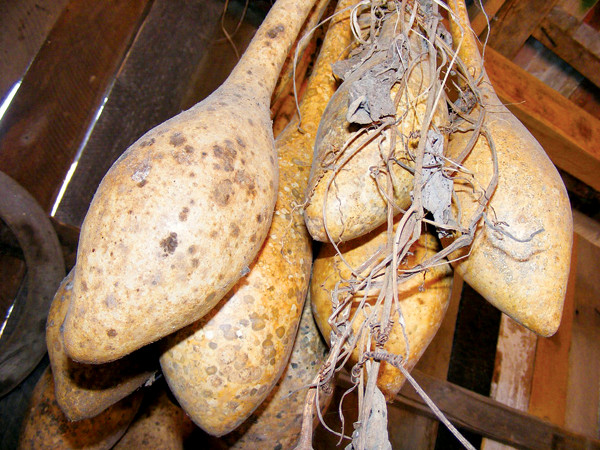
by Timothy Oleson Monday, June 23, 2014

Bottle gourds hung out to dry. Credit: ©byrev, CC0 1.0.
Logan Kistler of Penn State University and colleagues analyzed DNA from bottle gourds collected at pre-Colombian archaeological sites throughout the Americas, as well as from living wild gourds from all over the world. The pre-Colombian gourds, the researchers reported in Proceedings of the National Academy of Sciences, were closer genetically to African, rather than Asian, gourds, suggesting they traveled from Africa to the New World via a more direct route. Kistler and his colleagues then used ocean drift models to show that ocean currents could plausibly have transported the gourds, and their concealed seeds, across the Atlantic in less than a year. Once the plant arrived and took hold in its new home, large animals could have consumed the wild fruit and helped disperse its seeds across the Americas, the researchers suggested.
© 2008-2021. All rights reserved. Any copying, redistribution or retransmission of any of the contents of this service without the expressed written permission of the American Geosciences Institute is expressly prohibited. Click here for all copyright requests.